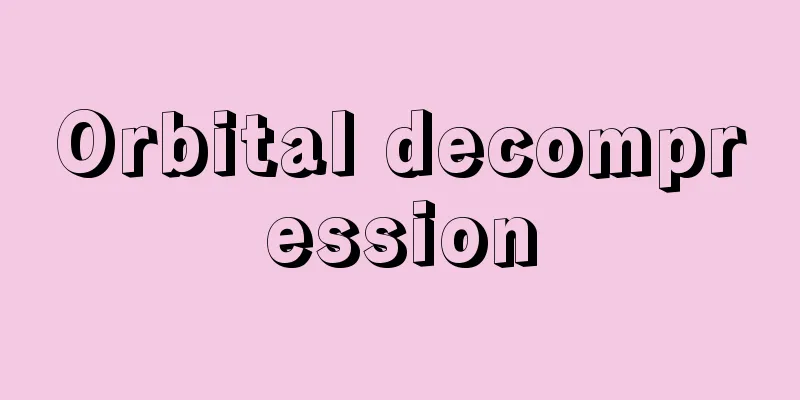Orbital decompression

|
When suffering from thyroid-related eye disease, orbital decompression surgery is required. However, there are many treatments for thyroid-related eye diseases. The specific method used is related to the condition. It does not mean that surgical treatment is required. Treatment should be carried out according to the condition to obtain the best treatment. Let’s take a closer look at the main treatments for thyroid-related eye diseases. General treatment 1) Actively adjust thyroid hormone levels and maintain them within the normal range. Avoid sudden reduction or increase in medication dosage. 2) Avoid spicy and irritating foods, quit smoking, prevent eye fatigue, wear sunglasses when exposed to strong light, and avoid emotional excitement. If the head is in an elevated position during sleep and the palpebral fissure does not close completely, eye ointment or a wet room should be used for protection. Drug treatment 1) Glucocorticoids: Patients with acute progressive disease or activity score CAS ≥ 4 may receive pulse therapy with glucocorticoids, either intravenous methylprednisolone or oral high-dose prednisone. During treatment, the complications of hormone use need to be closely observed: secondary hypertension, diabetes, stress ulcers, electrolyte imbalance, liver and kidney damage, osteoporosis, pathological fractures, mental disorders, hot flashes and insomnia, polyphagia and irritability, etc. For patients who are contraindicated in the use of systemic glucocorticoids, local intraorbital injection of triamcinolone acetonide can be given. 2) Immunosuppressant therapy: Patients who are suitable for glucocorticoid treatment can also try immunosuppressants, including methotrexate, cyclophosphamide and cyclosporine, which can also be used in combination with glucocorticoids. Complications include bone marrow suppression, liver and kidney damage, gastrointestinal dysfunction, infection, etc. 3) Local application of adrenergic blockers: In the early stage of the disease, α-adrenergic tension increases, causing the Müller muscles of the upper and lower eyelids to become excited and the eyelids to retract. The adrenergic blocking agent guanethidine sulfate eye drops can produce a chemical sympathectomy and relieve eyelid retraction. 4) Local application of botulinum toxin A: Botulinum toxin A is an acetylcholine receptor blocker that can compete with acetylcholine for the cholesterin receptors that control extraocular muscle movement, causing extraocular muscle paralysis. It can be used for upper eyelid retraction caused by levator palpebrae superioris spasm and strabismus caused by other extraocular muscle spasms, but the therapeutic effect can only last for a few weeks to about half a year and requires repeated injections. Radiation therapy For patients who are insensitive to drug treatment, whose vision deteriorates sharply, or whose systemic condition cannot tolerate drug treatment, local radiotherapy can be tried. The total dose of linear accelerator was 20Gy, and the daily irradiation dose was 2Gy. Complications include radiation cataracts, retinopathy and the risk of cancer. In a small number of patients, radiotherapy may worsen the condition. Surgery 1) Eyelid retraction correction surgery: Suitable for patients with severe eyelid retraction, large palpebral fissure, secondary exposure keratitis or those with affected appearance. Surgical methods include Müller muscle resection, levator palpebrae superioris muscle lengthening, levator palpebrae superioris muscle edge incision, lower eyelid retractor and capsulopalbral fascia posterior migration, blepharoplasty and blepharoplasty. 2) Surgical treatment of ocular myopathy: Restrictive extraocular myopathy is one of the most common clinical manifestations of the disease. Inflammation, edema and fibrosis of the extraocular muscles are the causes of muscle loss of motor function. The timing of surgery should be 3-6 months after the ocular myopathy has stabilized. For patients with highly exophthalmoidal condition, orbital decompression surgery should be performed first. 3) Orbital decompression: Orbital decompression is an effective method for treating severe cases. It is suitable for patients with stable control of hyperthyroidism, secondary optic neuropathy who need to relieve orbital apex pressure, or severe proptosis and secondary exposure keratitis. For those whose appearance is severely disfigured by exophthalmos, this surgery can be performed even after the disease stops progressing. 4) Fat resection: For patients with mild exophthalmos, orbital fat, especially fat within the myoconus, can be removed through a conjunctival incision to relieve symptoms. It has the advantages of concealed incision and small surgical trauma. It can be used in conjunction with orbital decompression. |
<<: How to correct wear on the outside of shoes
>>: What kind of exercise is suitable for synovitis
Recommend
Can pears be soaked in wine?
In modern life, wine is a very popular drink. It ...
What causes men to develop testicular cancer?
What are the causes of testicular cancer in men? ...
Soak your feet in water boiled with Sichuan peppercorns
There are many things in life that have more effe...
How long can you live with advanced gastric cancer? Doing 3 more things in your daily life can prolong your life
Gastric cancer is one of the common digestive tra...
Can honey remove dark circles?
Nowadays, more and more people are accustomed to ...
Can I get anti-inflammatory injections if I have acne on my face?
I believe that many people are very troubled by a...
What causes Meibomian gland blockage?
Meibomian gland blockage is a disease that many y...
How to calculate the number of fetal movements
Fetal movement is a phenomenon that women must pa...
Will my baby get infected if he takes a bath when he has chickenpox?
Varicella is a common viral infection disease, wh...
What is the best way to sober up?
When holidays come, some friends will get togethe...
Can I eat cantaloupe during confinement?
The period of confinement is the time when a woma...
Symptoms of dermatomyositis
There are many types of common diseases, and we n...
Best sleeping position after fibroid surgery
There is no saying about the best sleeping positi...
Reasons for poor sleep must be avoided
In today's society, poor sleep has become a p...
What are the causes of prostate cancer? What are the causes of prostate cancer?
At present, many middle-aged and elderly male fri...









